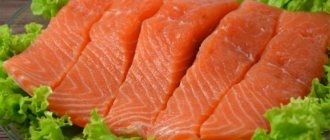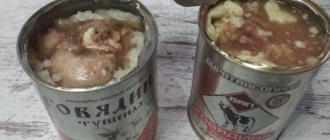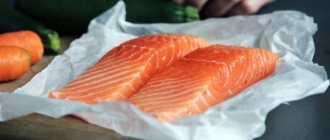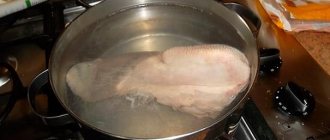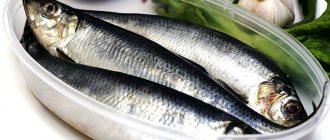Products can be stored longer, maintaining all their properties and features, if you use special modern techniques. Nowadays there is a demand for storing meat in vacuum packaging. This is a proven method thanks to which raw meat and meat products stay fresh on average three times longer.
Many people prefer to buy vacuum bags for meat to ensure maximum shelf life of the product. In specialized companies, such materials are sold in assortment, and due to the reliability of storage methods, they are always in high demand.
Now we will try to consider the key features of this method.
Shelf life of meat in a vacuum
Modern techniques make it possible to preserve raw meat and all its original characteristics and properties much longer. It will be completely usable after a long time. At the same time, the shelf life of meat in vacuum packaging increases on average two to three times.
You can profitably buy packaging materials in Moscow wholesale and retail to extend the shelf life of products and raw meat on store shelves, as well as in warehouses.
Let's look at the specific numbers in the table. Here experts provide confirmed comparative data.
It is important to know how long meat can be stored in vacuum packaging. The deadlines for raw meat in a vacuum and in film are as follows.
| Refrigerated. The temperature is maintained at +3 degrees. | In a frozen state. The required temperature level is maintained: it is -18 degrees. |
| In vacuum film the period will be 7 days. | It can be stored in a vacuum for up to 18 months. |
| Can be stored in film for a maximum of 3 days. | Storage in film is permissible for a maximum of six months. |
Experts say: the shelf life of meat in vacuum packaging increases significantly. At the same time, the product remains safe and suitable for consumption. This technology also allows you to preserve all the taste properties of the product, its consistency, and other features.
Types of packaging
Due to the fact that more and more housewives are beginning to store food in this way at home, manufacturers offer a large selection of special vacuum packaging: containers and bags of various shapes, sizes and even colors. All of them are sold complete with a pump, which is necessary to remove all the air from the package. On some models, the pump may be built into the lid.
- Vacuum storage containers are the most popular . They are made of plastic or heat-resistant glass, which allows them to be used in the microwave, for example, when defrosting stored meat. Additionally, some models are equipped with a built-in calendar that allows you to set the storage start date. You can buy such containers at most supermarkets or specialty kitchenware stores. They are not cheap, especially those made from high-quality materials, but their price is fully compensated by the advantages.
- You can also quite often find vacuum bags for storing food . They can be either disposable, requiring the use of a vacuum sealer, or reusable with a special valve to remove air.
Key points for storing meat in vacuum packaging
The basic property of the technique is complete pumping of air from the package. A vacuum is created in the internal space of the packaging material. It is the absence of air that makes it possible to significantly slow down the oxidation processes. Colonies of microorganisms develop much more slowly, so the product does not spoil.
It is important that microbes do not penetrate from outside either. Storage efficiency increases dramatically. The meat retains its original moisture level, as well as its smell and all its taste properties. In order for the shelf life of vacuum-packed meat to truly extend, it is necessary to ensure that it is sealed. If the packaging is damaged, the product will rapidly deteriorate.
Here are the main advantages of vacuum packaging:
- the meat is suitable for consumption even after one and a half years of being frozen;
- all properties of the product are completely preserved;
- the taste and aroma remain the same.
Nowadays, storing meat in vacuum packaging remains the best method: the product stays fresh almost three times longer. The most important thing is not to break the rules. For example, meat frozen in a vacuum should absolutely not be re-frozen.
Recommendations for vacuum packaging
Vacuum packaging machine is your indispensable assistant. As is known, during the storage of meat and meat products, processes occur that involve meat enzymes, and somewhat later, processes caused by enzymes of multiplying putrefactive microorganisms. These processes are activated under the influence of oxygen, moisture, light and other factors.Storing meat in a vacuum, and therefore at a low partial pressure of oxygen, either stops or slows down unwanted processes. In addition, storage in a vacuum is accompanied by a complex set of biochemical and physical-chemical processes, as a result of which the meat in the package ripens and acquires a more tender consistency and juiciness, and becomes more accessible to digestive enzymes.
In a vacuum, practically no formation of metmyoglobin occurs, so the color of the meat in the package is purple-red. After removing the meat from the packaging and keeping it in air for 20...25 minutes, the color changes to bright red, which is associated with the formation of oxymyoglobin. Meat has the highest organoleptic ratings with a vacuum degree of 98% (residual pressure no more than 0.02 kg/cm2).
The shelf life of chilled meat at temperatures from 0 to +2°C is up to 20 days, at temperatures from -1 to +1°C up to 30 days. Frozen meat can be stored at a temperature of -18°C for up to 9 months without loss of taste. The shelf life and packaging conditions for poultry meat and fresh fish are approximately the same.
Almost any product can be vacuum packed, except those that have a porous, loose structure, since atmospheric pressure will compress the product.
Packaging of products should be carried out in accordance with regulatory and technical documentation developed by industry institutes, namely:
- Meat products - VNIIMP Moscow, st. Talalikhina, 26, packaging laboratory tel. 276-97-11
- Poultry meat - VNIIPP (NPO "Complex") Moscow region, Solnechnogorsk district, Rzhavki village, packaging laboratory 535-94-48 standardization department 535-94 98
- Fish products – VNIIRO Moscow, st. Verkhnyaya Krasnoselskaya, 17. packaging laboratory 264-90-90
- Dairy products and cheeses - VNIKMI Moscow, st. Lyusinovskaya, 35, tel. 236-13-25
At your request, the relevant institutes will provide you with regulatory and technical documentation regulating packaging modes and shelf life of vacuum-packed products.
The ZlatoVak machine is an analogue of the MultiVac machines, links to which are mainly given in the instructions.
Special packaging materials are used for vacuum packaging. Ordinary polyethylene is gas-permeable and is not suitable for vacuum packaging. Russian enterprises have mastered the serial production of films for vacuum packaging, and some enterprises have also mastered the production of ready-made bags. The most common two-layer films are polyamide - polyethylene and lavsan - polyethylene. When purchasing bags, you should pay attention to the availability of a hygienic certificate for the packaging material and whether contact of this film with your specific product is allowed.
The table shows the recommended packaging modes and shelf life of various products that were taken from foreign materials.
It should be taken into account that under these conditions, taste and organoleptic characteristics are completely preserved. This means that, for example, frozen meat can be stored in packaging for years and decades, but its taste will deteriorate. No.
| Product type | Residual pressure kg/cm2 | Storage mode °C | Shelf life | |
| 1 | Meat and semi-finished meat products, poultry, raw fish | 0,05…0,02 | -18 | 9 months |
| -1…+1 | 30 days | |||
| +8 | 3…5 days | |||
| 2 | Sausages and meat products | |||
| boiled | 0,05 | +8 | 5…10 days | |
| -1…+1 | 30 days | |||
| semi-smoked | 0,05 | +8 | 10…15 days | |
| -1…+1 | 60 days | |||
| raw smoked | 0,05 | +8 | 15 days | |
| -1…+1 | 90 days | |||
| 3 | Salted and smoked fish products | 0,05 | +8 | 15…20 days |
| -1…+1 | 60 days | |||
| 4 | Cheeses | 0,1 | +8 | 30 days |
| 5 | Dried and dehydrated foods | 0,1 | no limit | no limit |
| 6 | Technical products, printing products | 0,2 | no limit | no limit |
Storage rules
To prevent meat from losing freshness and quality in the freezer, make sure it is properly cut and prepared.
Preparing for freezing
Before you put your piece in the freezer, prepare it. Determine in advance what you will cook from the carcass and divide it into appropriate portions. This will allow you not to defrost the entire piece if only part of it is required for the dish, since repeated freezing will lead to a loss of product quality.
Should I wash meat before freezing or after defrosting?
Do not wash meat under any circumstances. This leads to loss of quality and faster spoilage, since the liquid penetrates the fibers and expands when frozen, which leads to a breakdown in the structure of the fillet. If you want the product to last a long time, grease each piece with sunflower oil.
How to properly freeze a product?
Do not keep meat in the chamber without packaging, otherwise the fibers will darken and lose some of their beneficial properties. It's best to wrap each piece in cling film or a plastic freezer bag. Place different varieties only in different bags. Try to ensure that the packaging does not come into contact with other products in the chamber, since their bacteria can penetrate into the meat even through polyethylene.
For convenience, label each package indicating the date of freezing and the type of product.
At what temperature should you store meat in the freezer?
Most freezers are equipped with a temperature controller. Here you can set the temperature from 0 to -24 degrees. The temperature at which the meat will lie without losing quality depends on the shelf life. For example:
- in a chamber with a temperature of 0 to -6 degrees, the meat will lie for 2–3 days; if it is not a fillet, but a piece on the bone, the period will be reduced to 24–48 hours;
- at temperatures from -6 to -12 degrees, fillets, whole carcass or portioned pieces will maintain quality for 4 months;
- the product will not lose taste and quality for six months if it is kept in the freezer at a temperature of -18 degrees;
- at temperatures from -18 to -24 degrees, a fillet or piece on the bone will last for at least 18 months, but its structure may change during long-term storage.
Can meat spoil in the freezer?
Of course, meat cannot sit in the freezer for too long. Over time, its mass decreases, and the fibers lose useful molecular compounds. The fact is that freezing does not stop the development of biochemical reactions, but only slows them down. In addition, structural changes in some protein enzymes do not slow down even at very low temperatures, and lipid compounds change composition over a long time.
In addition, the liquid remaining in the fibers oxidizes and triggers new reactions that cause irreversible changes in the molecular structure of the product.
Remember that even frozen foods deteriorate over a long period of time, so do not risk eating meat that has been in the chamber longer than expected.
Freezing chilled meat
If there is a need to freeze chilled meat, then you should follow some rules:
- if the piece is large, you need to divide it into several small ones;
- it must not be washed;
- All air should be removed from the bag in which the piece of meat is placed;
- It is desirable that the freezing process be as shock as possible, so the temperature in the freezer should be set to the very minimum;
- since meat cannot be stored forever even in the freezer, you need to put notes in the bags with the freezing date, which will help you keep track of the expiration date;
- After the piece is completely frozen, it should be dipped in a pan of cool water and put back in the freezer. The top of the package will be covered with a crust of ice and the frozen, chilled meat will retain a sufficient amount of water.
What foods can be stored in a vacuum?
The list of such products is quite large. You can store meat, vegetables, cheeses, ready-made meals and then liquids in them.
It is worth considering the storage features of each of them:
- Raw meat and fish . It is advisable to pre-cool or freeze them for a few hours before packing them. This will help in retaining juice and shape. The shelf life of raw fish can thus increase from 3 to 9-10 days. If meat or fish is stored in a vacuum bag in the freezer, it can remain fresh for months or even a year.
ATTENTION! When placed in a vacuum, beef may brown due to lack of oxygen. But this does not mean that the meat has spoiled.
- Vegetables. Before putting them in a vacuum bag or container, preliminary short-term treatment with boiling water is required. This procedure is called blanching and allows you to preserve the smell, color and taste of products. Leafy vegetables and legumes require processing for 1-2 minutes, carrots - 5 minutes in boiling water, cereal plants - 10 minutes. After this, the vegetables must be cooled and dried, only then placed in a bag or container. The shelf life of vegetables in this form increases from 4-5 days to 3 weeks.
Besides the obvious solids, liquids can also be stored using special vacuum lids. In this way, you can extend the life of juices, compotes or vinegar.
- You can also store cooked foods , such as soups, cereals or casseroles. Their shelf life in a vacuum container increases significantly compared to conventional storage and reaches up to 2 weeks.
